11 Movies Improved by Being Found-Footage Films
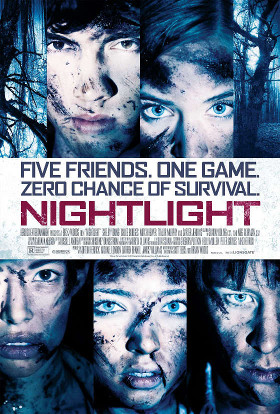 |
Towards the end of March, a found-footage horror movie called Nightlight premiered in select theaters across the US, and it was also made available through Video On Demand. While it’s not an absolutely perfect example of what a found-footage movie could be, it’s a damn good horror flick that’s really fun to watch.
There’s a lot of undue hate for the found-footage approach. Often, I get into conversations with people who state that they’re “sick of that genre”, and I have to explain the difference between genre and format. A found-footage movie can be horror, sci-fi, comedy, a heartstring tugging family movie, etc. The technique of using a consumer level recording device to reinforce the sense of realism is a key element in crafting a believable world for a movie that wants the audience to think at some level, “this really happened!” When that trick is pulled off correctly, a story can be elevated to a place on or past the very edge of suspended disbelief.
It’s endlessly fascinating to see the reactions to found-footage movies. They’re often seen as a cheap method of making horror movies that end up feeling contrived. When a found-footage movie does things right, however, glorious things can happen.
First things first: it’s necessary to lay out the rules on what makes a found-footage movie great.
1. There can’t be any contrivances that break the suspension of disbelief.
2. Don’t stay inside the camera when it doesn’t serve the story.
3. All actors must be unknowns at the time of filming.
4. It must be stated outright or intuitively easy to figure out how the footage was assembled into the movie that is being watched.
5. The movie must be improved by the found-footage element, rather than being a cheap and gimmicky route to get higher profit margins.
The important point to recall is that the best found-footage movies are the ones that make it easier to believe that what’s happening on screen could be true events. With all this in mind, let’s get to the goods.
11. The Remaining
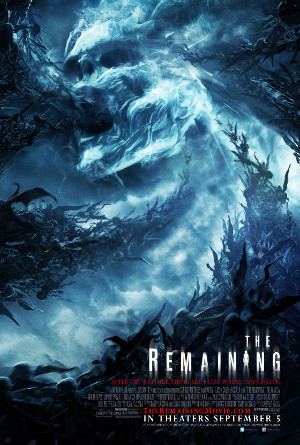 |
The Premise – The Biblical Apocalypse gets rolling during a wedding being recorded by a friend of the bride and groom. Over the next few days, a small cast of characters are struggling to survive a world filled with monsters, demons and uncertainty.
Are there suspension breakers? – Not unless you find the idea of the Biblical Apocalypse itself to be too much to take seriously.
Does it stay inside the camera for the wrong reasons? – Quite the contrary. Much of the footage is done in the standard narrative style of an omnipresent and invisible camera.
Any known actors? – It wasn’t until I looked on imdb that I realized that I realized Alexa PenaVega is in this movie. The fact that she was completely unrecognizable to me is the reason why I’m making an exception and putting it at the bottom of the list.
Easy to figure out how the footage came together? – Very easy. All of the camera work comes from a small handful of devices that are integrated into a movie that is largely outside of those devices.
How is it improved by being found footage? –
Director Dean Israelite recently stated in an interview with TR that he originally wanted his sci-fi movie Project Almanac to be a mix of standard narrative and found footage. The fact that it isn’t holds a damn good movie back from being a great one. Too many moments where the characters acknowledge how weird it is to “film everything”, and the flash forwards every time the camera is transported through time are enough to remind me that I’m watching a made-up story
By staying outside of recording devices when the plot calls for it, a story can manage to avoid that most annoying of tropes in found-footage movies, “morons who keeps recording when their lives are in danger.” There’s also room for intimate scenes between characters that aren’t part of some intrusive attempt to capture everything for posterity. One could call the kind of movie Israelite wanted to make “Found Footage Lite”, “Partial Found Footage” or perhaps “Hybridized Found Footage”. Whichever name is selected, there needs to be some kind of name for it. Having a distinction for movies that don’t stay entirely inside of the camera would be a great benefit to the audience. This approach is what elevates The Remaining up to the greatness Project Almanac had the potential to attain.
It’s also worth noting that this is a great movie on its merits of story. While it buys into the modern Christian concept of the Rapture, it doesn’t go overboard preaching to the audience. The terms are laid out clearly that people stuck on earth need to choose whether or not to side with God, but the ones who doubt the whole thing aren’t presented as horrible people. Those that do go with God aren’t presented as flawless either. The characters are believable and their struggle is engaging. The best way to describe it is to imagine if Left Behind was written by people with better storytelling skills who aren’t a bunch of judgmental assholes.
10. Nightlight
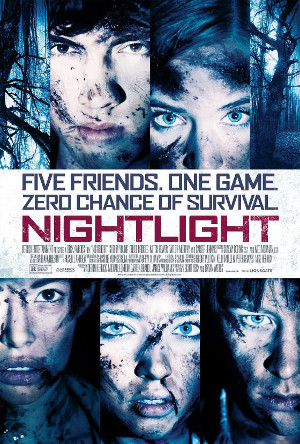 |
The Premise – High school student Robin has been invited to a nighttime flashlight game with four of “the cool kids”. The game will be taking place in the Covington forest, the place where her friend Ethan recently committed suicide. The fun soon turns to fear when a demonic entity targets the kids and starts picking them off one by one.
Are there suspension breakers? – Almost, but not quite. There’s a moment when the lights of a car that’s been abandoned for over a year suddenly turn on. In that amount of time, the battery should have drained away too far for that to happen. There are enough other freaky electrical occurrences involving lights coming on or going off suddenly (suggesting that the demon has electrical powers), however, so it’s pretty much forgivable.
Does it stay inside the camera for the wrong reasons? – No. The point of view we’re seeing remains consistent at all times.
Any known actors? – Not really. All of the actors have worked previously (for example, Shelby Young and Kyle Fain both had bit roles in The Social Network, and and Mitch Hewer has done some stuff in the UK, such as the Channel 4 series Skins), but none of them are recognizable stars.
Easy to figure out how the footage came together? – In a counter-intuitive but cunning trick, the bulk of the footage isn’t actually being filmed by a camera that exists in the world we’re seeing. Instead, we are given a view from inside the flashlight brought to the woods by Robin… and it turns out that it’s the same flashlight that Ethan was carrying the night he killed himself.
How is it improved by being found footage? – The formula of a bunch of kids going out into a forest only for bad things to happen to them has been done so many times that it really does need something new to reinvigorate it. Even the element of telling such a story through the format of found footage is starting to feel overdone. By placing the viewer inside of a dead kid’s flashlight, an extra layer of realism is added because none of the characters are aware of being watched. Rather than talking to a camera and to whomever might someday see video footage of what’s going on, their interactions are entirely between each other and the demon stalking them.
The film is bookended by excerpts from the video journal of Ethan. It starts out with a video before the incident that set him off on the path to suicide, followed by an opening scene of the camera entering the flashlight. At the end of the story, the camera leaves the flashlight, and we jump to Ethan’s final video entry in which he declares his intent to jump off a cliff.
An example of starting off inside a camera before jumping out and then back in that doesn’t work would be District 9. It starts out as a documentary, then somewhere in the middle it become a standard action movie without warning. By the end of the movie, it comes back to being a documentary (again, without warning). The jarring shifts in style brings the whole experience to a mental halt, leaving the viewers wondering what the hell just happened. Nightlight avoids this confusion by showing us visually what’s going on when it changes up the approach of the story, and also telling us why it’s happening.
9. Earth to Echo
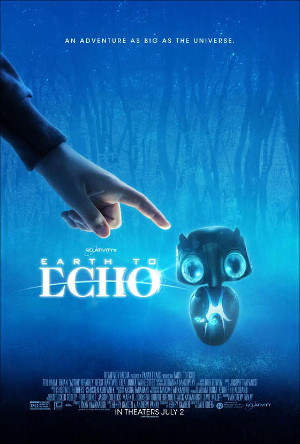 |
The Premise – A bunch of kids are upset that their neighborhood is going to be demolished to make room for a new highway, and decide to hang out together as long as they can before their parents move them to different places. While hanging out, they stumble onto a robotic alien life form that’s been stuck on earth for a long time and wants to go home. In order to help it, they need to go on a fetch quest to find the pieces of its space ship.
Are there suspension breakers? – No.
Does it stay inside the camera for the wrong reasons? – No.
Any known actors? – No.
Easy to figure out how the footage came together? – Yes. One of the protagonists opens and closes the film with narration, telling us that he assembled the footage to tell the story of him and his friends.
How is it improved by being found footage? – The classic story model of kids having an an adventure outside of adult supervision is made more intimate and believable by using a video camera. All of the footage being filmed by the young characters reinforces the idea that this is their story, and that the parents aren’t really part of it.
Director Dave Green and writer Henry Gayden have crafted a story that’s compelling enough on it’s own and made even more so by having believable children, instead of falling into the trap that so many movies do of having kids that act more like adults in child bodies. They’re smart, without being so smart as to avoid making stupid errors and having to figure out how to correct course. The dialog feels like stuff that kids would actually say (which is a really rare trick that seems hard to pull of in studio movies).
The presentation of the movie as a private record of their life-changing adventure enhances the sense of wonder that a movie like this should aim for by giving the audience a stronger license to pretend that this really happened to someone.
8. Chronicle
 |
The Premise – Three guys in high school discover a bizarre creature, and afterwards, they end up with super powers. Over the next few months they play around with those powers until things get out of hand.
Are there suspension breakers? – No.
Does it stay inside the camera for the wrong reasons? – No. Our beloved editor in chief feels that the climactic battle violates this rule, but I’ll address why I don’t agree in a moment.
Any known actors? – No. While two of the lead actors (Dane DeHaan and Michael B. Jordan) have gone onto much bigger movies, and the other one (Alex Russell) has had a couple of noteworthy roles since the film came out, they weren’t known for anything significant when Chronicle was released.
Easy to figure out how the footage came together? – Pretty easy. With the final battle taking place across Seattle, it’s something that would clearly be investigated by government officials. There’s already a scene in the movie showing a hazmat team at the site where the strange creature was discovered, so it makes sense that they’d follow up on the incident in Seattle.
Every bit of footage shown in the movie, such as a young woman’s weblog videos, security footage from a convenient store and so on are things that would be tracked down in such an investigation. That includes the footage from the mobile phones, laptops and tablets that captured the final battle. Those would likely have been confiscated under national security laws. The information that would have been gathered about Andrew would eventually uncover his interest in Tibet, which is where his camera would have been found along with his body. This also means that the government officials who’ve investigated this case have the corpse of a superhuman which should definitely factor into the potential sequel.
It’s worth noting that Chronicle does a better job of being believable with multiple cameras being used than Cloverfield did with a single camera. The contrivance that the footage of the monster attack is being recorded over previous footage of a pleasant day spent together between two people that could have become lovers but did not undercuts the entire story. Yeah, it’s within the realm of plausibility, but it’s also a work around to include the typical movie convention of flashbacks establishing personal history. The flashbacks are necessary to the story, but the “footage being recorded over bit” breaks the suspension of disbelief and reminds viewers that they’re watching a made up story. With Chronicle, Josh Trank and Max Landis give a lesson in how to tell a found-footage story that requires a wider scope than can be achieved through the use of a single camera.
How is it improved by being found footage? – In addition to making all of the action scenes feel more immediate and intense, the video camera approach gives us a more intimate character study of bullying victim Andrew who lays at the heart of the story.
Throughout the early scenes of the movie, before the trio gain their powers, people keep asking Andrew why he’s recording stuff all the time. His answer that he doesn’t know and just felt like doing it rings hollow. At some level even if he can’t quite articulate it, Andrew has a reason for what he’s doing. The years of abuse at home and at school have taken a toll on him, and dealing his mother’s illness has drained him even further. He’s scared, angry and wants to change his life but doesn’t know how. Walking around with the camera gives him a shield of isolation that puts people near him on edge, it also offers a creative outlet for his pent up frustration.
If a viewer were to stumble into this movie blindly with no foreknowledge of what it’s about, the early scenes could very easily be mistaken for the video diary of a young man intending to commit suicide or going on a school shooting rampage. When the superpowers enter the picture, the story turns into a super-powerful allegory for school rampages by showing what the conditions creating them could lead to on a grander scale… by the way, I feel absolutely no shame for that pun because puns are awesome.
7. Apollo 18
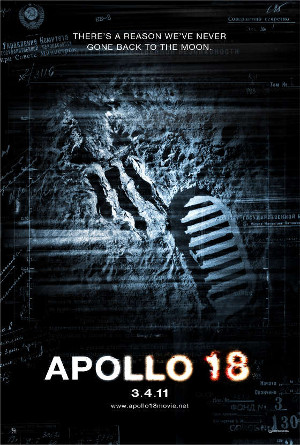 |
The Premise – Presented as archival footage from NASA, it is revealed that in 1973, after having been cancelled, the 18th Apollo Mission was greenlit as a top secret project through the Department of Defense. Three astronauts are sent to the moon with one to remain in orbit while the other two are meant to land and place detection devices that will warn the US of potential ICBM launches from Russia.
While they’re on the moon, two things eventually become clear. They are not alone up there, and they are not safe.
Are there suspension breakers? – No.
Does it stay inside the camera for the wrong reasons? – No.
Any known actors? – No.
Easy to figure out how the footage came together? – Yes. Aside from being told at the outset this is archival NASA footage, it’s also clear that certain footage would have to have been retrieved by NASA through a subsequent mission.
How is it improved by being found footage? – By being presented as archival footage that’s been cobbled together into a narrative, the film provides a level of realism that taps into one of my favorite tales of conspiracy culture. The claims that the moon landing were faked haven’t ever offended me so much as bored me. If I’m gonna entertain the idea that there’s a big secret about the moon, I’d much rather go with something stranger and more fantastic over something mundane. The lesser circulated claims that humans encountered aliens on the moon, and that we were scared off is a notion which fits my desire perfectly.
With Apollo 18, director Gonzalo L?pez-Gallego and writer Brian Miller create a slowly rising sense of tension throughout their story. The plot is sometimes predictable, but remains engaging throughout. As a standard narrative film, the story would have far less impact on the mind of the audience and it wouldn’t be nearly as memorable.
6. Nothing So Strange
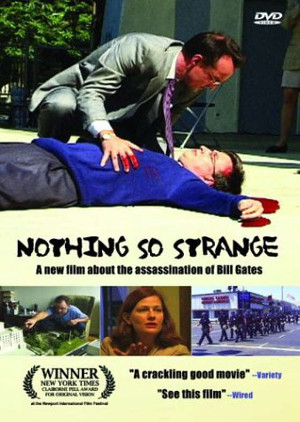 |
The Premise – An alternate history documentary, the movie takes place after the assassination of Bill Gates in December of 1999, and follows a cast of characters seeking to unravel the truth behind the events.
Are there suspension breakers? – No.
Does it stay inside the camera for the wrong reasons? – No.
Any known actors? – No.
Easy to figure out how the footage came together? – Yes. From the getgo, we’re told that this footage has been assembled to document a group’s efforts to unravel a mystery.
How is it improved by being found footage? – By taking the story of a celebrity’s death and the subsequent questions surrounding the incident then packaging it as a documentary, director Brian Flemming manages to craft an excellent exploration of conspiracy culture and fringe group dynamics. The conceit that all of this footage is of real people is reinforced by most of the cast using their real names and being credited not as actors but as participants.
Films like this are typically called a mockumentary, but that term doesn’t fit (pseudo-documentary would be more accurate) because there’s no mockery here. The conspiracy theorists that attempt to uncover the truth about Gates death aren’t looked down on or made fun of, instead they’re portrayed in a very relatable fashion that makes their cause seem admirable. If this tale were told through standard movie narration, caring about anyone on screen to the same degree would be a hell’ve a lot harder.
5. Project X
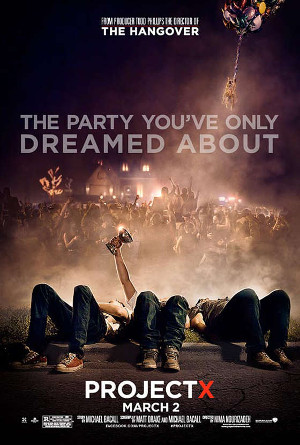 |
The Premise – A group of high school students make an attempt at putting together a legendary party, but things soon end up getting insanely out of control.
Are there suspension breakers? – No.
Does it stay inside the camera for the wrong reasons? – No.
Any known actors? – Not at the time. Some of the actors have gone onto other roles since the movie, but none of them were in anything significant beforehand. Most notable is a small role by Miles Teller. He definitely has a higher profile now, but at the time his most noteworthy role was in the 2011 remake of Footloose, which I think most people have forgotten ever existed. An argument could also be made that the angry little person in the middle of the movie being played by semi-recognizable stunt actor Martin Klebba breaks suspension, but the idea of a minor celebrity showing up out of nowhere can also be seen as reinforcing the extreme craziness of the party.
In contrast, look at As Above So Below or Archie’s Final Project. The former has Ben Feldman who was already in Cloverfield, meanwhile the latter has veteran actors such as Nora Dunn , David Carradine and Mariel Hemingway in it.
Found-footage movies don’t require fresh faced newbies who’ve never worked on another film before (though that does help). What they do need, however, are actors whose previous work hasn’t made them an instantly recognizable presence on-screen. Project X is a good demonstration of how that’s done right.
Easy to figure out how the footage came together? – It’s directly stated that this footage has been recorded and collected to document the party.
How is it improved by being found footage? – The consumer-camera view of the events gives a beneficial level of realism to the story’s exploration of what a cinematic “legendary high school party” would be like in real life. The scale of chaos and damage are rendered far more intense by the feeling that “this could really have happened.”
The epilogue scenes complete the theme of realism by showing how much damage a legendary party could actually cause, it also highlights the amount of problems that can come with being responsible for such an event.
The film also serves as a great example of the cycle of imitation between art and life. In addition to being inspired by the classic trope of crazy parties, it also inspired a series of actual crazy parties which had some heavy legal consequences.
4. Breakup at a Wedding
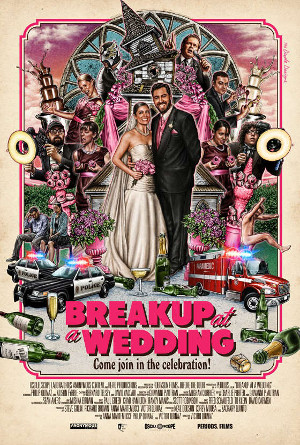 |
Disclosure: I first watched this movie through a gifted copy from my brother who knows the writers and director.
The Premise – A wedding videographer encounters a bizarre enough situation that he opts against his typical procedure of deleting or shelving the kind of footage he usually leaves out of the final video. Instead, he assembles the worst moments into a narrative documentary. His clients, Alison and Phil have been having relationship problems as their wedding draws near. She eventually decides that she wants to break up with Phil but go forward with the wedding to avoid disappointing her family. Phil plays along hoping to win her back.
Are there suspension breakers? – No.
Does it stay inside the camera for the wrong reasons? – No.
Any known actors? – No.
Easy to figure out how the footage came together? – We’re specifically told through narration what this footage is.
How is it improved by being found footage? – As a typical “things go crazy during a big wedding” story this wouldn’t stand out as all that unique. Adding in the wedding video documentation element provides everything with an extra layer of believability and excitement. The cast give convincing performances which push this comedy of errors into funnier directions than might be expected.
Along with Project X, Breakup at a Wedding serves as one of the best examples of how fun the found-footage format is when it’s applied to comedy. The improv atmosphere inherent to such movies creates an environment where actors can get into a groove with each other and nail jokes down in remarkable ways. The improv element also lends itself to drama, as you’ll see with the next entry…
3. $50K and a Call Girl: A Love Story
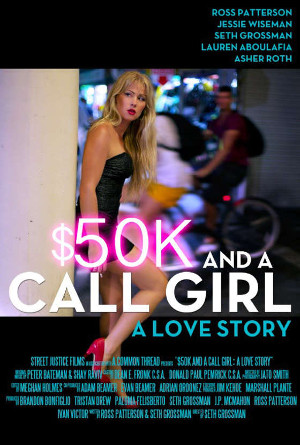 |
The Premise – Aspiring filmmaker Seth gets some bad news. His brother Ross is diagnosed with a terminal form of brain cancer, so he decides to spend the fifty thousand dollars that he’s been saving for his wedding on making a bucket list road trip film as a way to make his brother’s final days as pleasant as possible. Things get complicated when his fiancee insists on tagging along, and Ross decides to bring a call girl named Carly whom he recently had a session with.
Are there suspension breakers? – No.
Does it stay inside the camera for the wrong reasons? – No.
Any known actors? – Not really. There’s a hip hop star named Asher Roth who plays himself, but that’s it.
Easy to figure out how the footage came together? – Yup. Once again, were told through narration exactly what’s going on.
How is it improved by being found footage? – Like Breakup at a Wedding and Project X, this is a story that wouldn’t be all that unique or interesting if it was done as a standard movie. The pretense that we’re viewing video footage recorded by a man watching his brother die elevates the story to a captivating level.
Director Seth Grossman (who also acted and wrote for the movie) and Ross Patterson (lead actor and cowriter) have put together a compelling story of mortality and the flawed ways that people try to handle it. The female leads Lauren Aboulafia and Jessie Wiseman are definitely actresses that are worth keeping an eye on in the future. Wiseman in particular gives a heart felt performance that has me looking forward to whatever she does next. According to imdb, it’s going to be a movie directed by Ross Patterson called Helen Keller vs. Nightwolves. There’s no description of the plot, but the title and crew already have me wanting to see it. Meanwhile there’s a found-footage horror movie from Seth Grossman called Inner Demons, and it sounds like something I’m gonna have to take a look at in the near future.
2. The Houses October Built
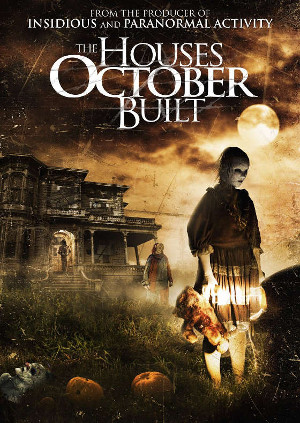 |
The Premise – In the days leading up to Halloween, five friends in an RV are traveling around to various haunted houses in search of the most extreme experience they can find. As their journey progresses, they become aware of a haunt with no fixed location called Blue Skeleton. Eventually it becomes clear that they’re being drawn into something which is likely more than they bargained for.
Are there suspension breakers? – No.
Does it stay inside the camera for the wrong reasons? – No.
Any known actors? – No. Some of the cast have been in other things, but not in any way significant enough for them to stand out.
Easy to figure out how the footage came together? – Very easy. After a bit of initial documentary footage that lays out what adult haunted houses are like (and which continues to be interspersed throughout the film), narrative texts explains that most of the following footage was filmed by the five protagonists with additional footage allegedly having been taken by the group known as Blue Skeleton.
How is it improved by being found footage? – The blending of documentary and found-footage horror creates a superb level of engagement. In addition to the feeling that the events on screen could have actually happened, the news clips and interviews with people at haunted houses reinforces the plausibility of the story by demonstrating real events where things got out of hand.
The best way I can describe the movie is to say “This is what House of 1000 Corpses could have been!” That’s not meant as a slight against Rob Zombie’s debut film. After being dropped by two different movie studios before getting picked up by Lionsgate, it was kind of inevitable that the amount of editing and reediting would result in at least a slightly marred work. Having said that, The Houses October Built is still a superior work. It takes the same root idea of “young idiots traveling around looking for roadside attractions run into some fucked up people”, but fleshes it out more. The haunted houses visited throughout the movie gives a better sense of the journey leading to danger, whereas House of 1000 Corpses jumping right in with the place of danger.
At times writer Zack Andrews’ plot comes off as predictable, but not unbelievably so. Every bad decision that leads the characters further and further into danger is an idiotic move that most of us know someone capable of blundering into. Director Bobby Roe and the rest of the cast craft such realistic performances that when things reach the point of no return, the momentum of the story propels events and characters into a suitably ambiguous ending that lingers in the mind of the viewer long after the credits have stopped rolling. In the realm of found-footage horror, I can only think of one film that stands above this…
1. The Blair Witch Project
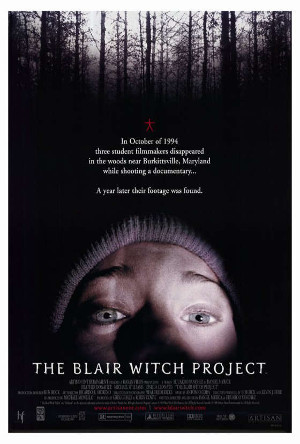 |
The Premise – In 1994, three film students disappeared in the Black Hills of Maryland while filming a documentary about a local folk legend. Though they were never seen or heard from again, their equipment and footage was discovered a year later and eventually turned into a movie that was released in 1999.
Are there suspension breakers? – No.
Does it stay inside the camera for the wrong reasons? – No.
Any known actors? – No. This was the first movie for all three of the actors as well as both of the directors. While they’ve all continued to work in the industry, none of them have been attached to any project nearly as prominent.
Easy to figure out how the footage came together? – Very much so, as we’re told from the outset via text on the screen what we’re watching.
How is it improved by being found footage? – This is the movie that put found footage on the cultural map. While it’s not the first movie to present fiction as fact, it’s the first movie to blur the lines between truth and make believe on such a huge scale. An earlier point of comparison that’s often cited is the 1980 Italian horror film Cannibal Holocaust, but today it’s far more remembered for it’s intensely gory violence (which included actual violence towards animals).
The Blair Witch Project came along during the dawn of the Internet, and the creators used that resource to their full advantage. It’s the only found-footage movie that pulled off the trick of convincing the masses that it was a depiction of actual events. Viral marketing techniques such as websites presenting the story as real events are common now but back in 1999, they were very new and different. There was even a behind-the-scenes special aired on the Sci-Fi Channel that discussed the making of the movie as though the events were real.
In the 15 years since it first debuted in theaters, a hoard of other found-footage movies have come along, many of which tell better stories. All of those movies owe a debt to directors Daniel Myrick and Eduardo S?nchez who codified a whole new way of telling stories on screen.
Feel free to use the comments to tell me what movies I should feel bad about not putting on this list. If nothing else, I could use some more suggestions for stuff to watch.
Previous Topless Robot Articles by Greggory Basore Include:
6 Disappointing Ways Kingsman Differs From the Comics, and 4 Ways It Improves Upon Them
9 Comic-Based Sexual Situations Too Bizarre or Risque for Marvel to Put Onscreen
The 9 Most Heartbreaking Moments in Nerdery of 2014
7 Reasons Why The Feud Between “Casual” and “Hardcore” Gamers is Literally Ridiculous.
10 Reasons Why An All Female Ghostbusters Reboot is the Best Possible Direction
10 Reasons Hollywood Needs to Stop Catering to Whiny Assed Nerds like You and Me
The 7 Most Amusing Reactions and Possibilities to come from Microsoft Buying Minecraft
10 Reasons I Don’t Blame Robin Williams for Wanting to Die
The 5 Most Frustrating Moments Game of Thrones Season 4 (and 5 Ways to Wait for Next Year)
The 15 Geekiest Shows of Summer 2014
8 Unanswered Questions Left by X-Men Days of Future Past
5 Lessons Hollywood Should Learn from The Lego Movie (And 5 Ways they’ll Miss the Point)
16 Heartbreakingly Awesome bits of production art that never made it to the screen.
The 30 Best Origins of Superman
